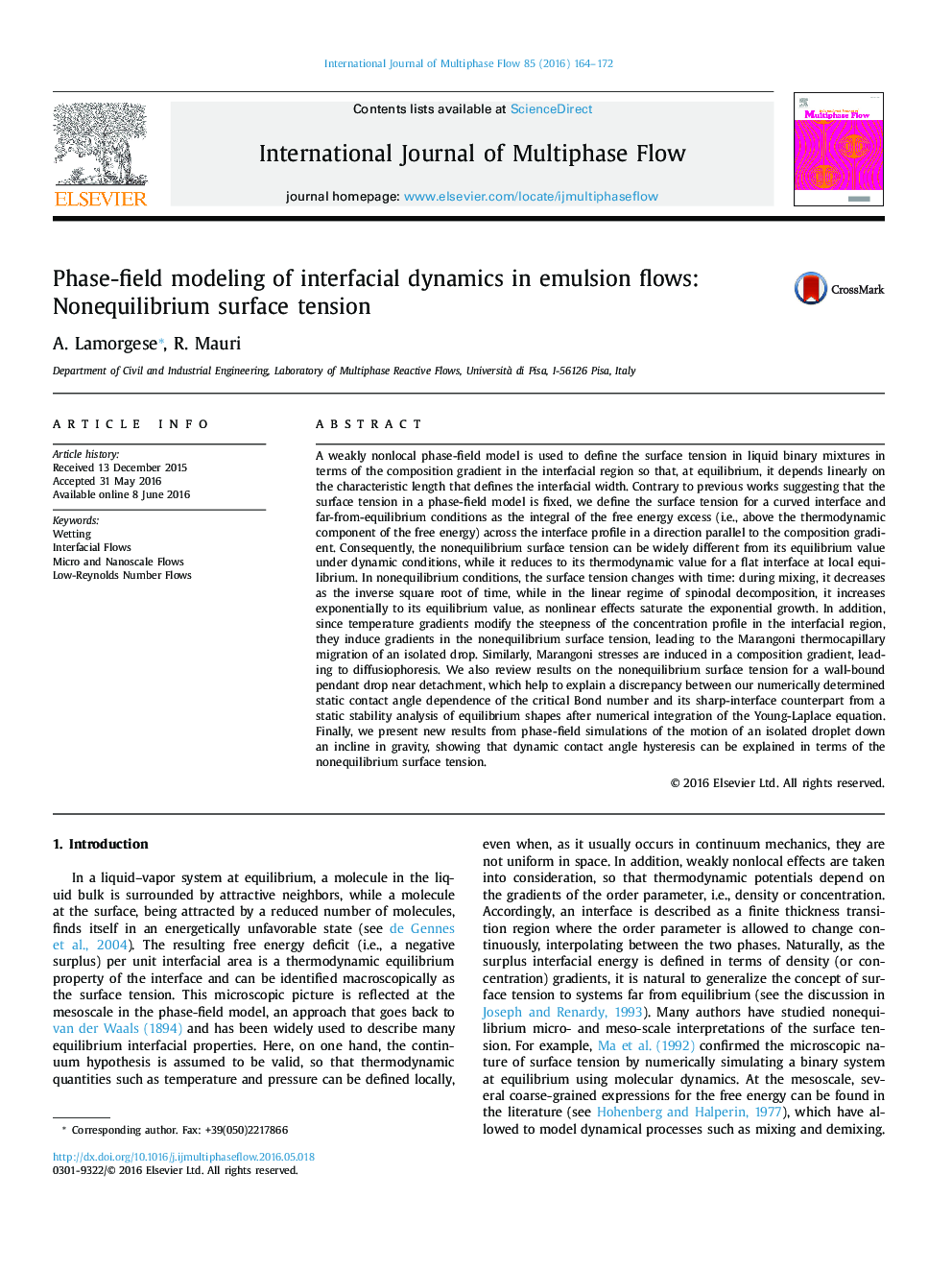| Article ID | Journal | Published Year | Pages | File Type |
|---|---|---|---|---|
| 7060232 | International Journal of Multiphase Flow | 2016 | 9 Pages |
Abstract
A weakly nonlocal phase-field model is used to define the surface tension in liquid binary mixtures in terms of the composition gradient in the interfacial region so that, at equilibrium, it depends linearly on the characteristic length that defines the interfacial width. Contrary to previous works suggesting that the surface tension in a phase-field model is fixed, we define the surface tension for a curved interface and far-from-equilibrium conditions as the integral of the free energy excess (i.e., above the thermodynamic component of the free energy) across the interface profile in a direction parallel to the composition gradient. Consequently, the nonequilibrium surface tension can be widely different from its equilibrium value under dynamic conditions, while it reduces to its thermodynamic value for a flat interface at local equilibrium. In nonequilibrium conditions, the surface tension changes with time: during mixing, it decreases as the inverse square root of time, while in the linear regime of spinodal decomposition, it increases exponentially to its equilibrium value, as nonlinear effects saturate the exponential growth. In addition, since temperature gradients modify the steepness of the concentration profile in the interfacial region, they induce gradients in the nonequilibrium surface tension, leading to the Marangoni thermocapillary migration of an isolated drop. Similarly, Marangoni stresses are induced in a composition gradient, leading to diffusiophoresis. We also review results on the nonequilibrium surface tension for a wall-bound pendant drop near detachment, which help to explain a discrepancy between our numerically determined static contact angle dependence of the critical Bond number and its sharp-interface counterpart from a static stability analysis of equilibrium shapes after numerical integration of the Young-Laplace equation. Finally, we present new results from phase-field simulations of the motion of an isolated droplet down an incline in gravity, showing that dynamic contact angle hysteresis can be explained in terms of the nonequilibrium surface tension.
Keywords
Related Topics
Physical Sciences and Engineering
Chemical Engineering
Fluid Flow and Transfer Processes
Authors
A. Lamorgese, R. Mauri,
